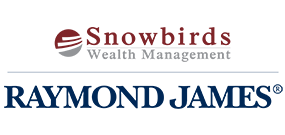BACKDOOR ROTH IRA – What Is It & When Does It Make Sense
Written by Carson Hamill CIM®, CRPC®, Associate Financial Advisor, Assistant Branch Manager & Dean Moro BComm, CIM®, Associate Financial Advisor
The backdoor Roth IRA conversion strategy allows you to move dollars from a traditional IRA to a Roth IRA, even if your income is too high to be eligible for a Roth IRA. Here, we will discuss the backdoor Roth IRA in more detail, the conversion process, and when it makes sense to consider this strategy.
- What is a backdoor Roth IRA?
- The differences between a Roth IRA and a traditional IRA
- Who can execute a backdoor Roth IRA strategy?
- How to create a backdoor Roth IRA
- Benefits of a backdoor Roth IRA
- Tax impacts of a backdoor Roth IRA
- Are you taxed twice with a backdoor Roth IRA?
- Can a backdoor Roth IRA conversion make sense for individuals moving to Canada?
- Summary
What is a backdoor Roth IRA?
A Roth IRA is a tax advantaged individual retirement account to which you can contribute after-tax dollars. The primary benefit of the Roth IRA is that the contributions and earnings can grow tax-free and be withdrawn tax-free after age 59 ½, assuming the account has been open at least five years.
Because there are income thresholds that restrict high income earners from funding a Roth IRA, a strategy called the backdoor Roth IRA conversion allows high income earners to work around these restrictions. The process is as follows: basically, you put money you cannot deduct as an IRA contribution in a traditional IRA, and then convert your contributed funds into a Roth IRA.
It is important to note that the backdoor Roth IRA strategy is not a process to avoid tax. During the process of transferring your assets from a traditional IRA to a Roth IRA, you will owe taxes on the proportional principal, earnings, and appreciation that hasn’t been taxed. If you do not have any IRA balances, then a contribution to the traditional IRA and an immediate conversion to a Roth IRA will not create taxable income.
The differences between a Roth IRA and a traditional IRA
It is important to note how the Roth IRA and traditional IRA differ. The key attributes and differences are as follows:
- A Roth IRA is an Individual Retirement Account to which you contribute after-tax dollars.
- While there are no tax benefits from the contribution itself, your contributions and earnings can grow tax-free. In addition, you can withdraw funds from your Roth IRA tax-free and penalty-free after age 59½ and once the account has been open for five years.
- The issue for high-income tax-payers is that individuals who earn above a certain amount are not able to open or contribute to a Roth IRA.
- The traditional IRA provides the account holder a tax break in that certain taxpayers can deduct their contributions with no taxes owing until the money is withdrawn.
- Traditional IRAs do not have income thresholds for contribution, but there are income thresholds for deduction eligibility.
Who can execute a backdoor Roth IRA strategy?
The backdoor Roth IRA strategy only works for U.S. residents. If a person is already a Canadian resident, they do not want to withdraw their IRA to create a taxable event for Canadian tax purposes.
How to create a backdoor Roth IRA
A backdoor Roth IRA is a two-step process. Step one is to fund a traditional IRA. Step two is converting the funds to a Roth IRA. There are a few ways to create a backdoor Roth IRA:
- Contribute to an existing traditional IRA and then move the funds to a Roth IRA
- Roll over existing traditional IRA contributions/money into a Roth IRA
- Convert your entire traditional IRA to a Roth IRA
- If you have a 401(k) and your plan provider allows conversions, you could roll your 401(k) account over to a Roth IRA
As always, it is best to consult with your cross-border tax professional to determine if this strategy is a fit for you.
Benefits of a backdoor Roth IRA
A key feature of a backdoor Roth IRA strategy is that you pay tax in advance on the converted pre-tax assets. Following the conversion, the converted assets and future growth will be tax-free. This strategy makes sense if you believe that tax rates will increase in the future and/or your income will be higher in the years following the conversion.
Unlike traditional IRAs, Roth IRAs do not have annual taxable Required Minimum Distributions (RMDs). Another advantage is tax-deferred growth in the account for as long as you choose. You have the flexibility to withdraw as much as you want or as little as you want, or you can choose to not withdraw anything at all.
A backdoor Roth IRA conversion can result in substantial tax savings over time since Roth IRA distributions are not taxable, versus the traditional IRA which requires taxable disbursements.
Tax impacts of a backdoor Roth IRA
You need to consider that when an IRA transfers to a Roth IRA, you will need to pay tax on the original amount contributed to the traditional IRA that was not taxed. For example, if you contribute $10,000 to a traditional IRA for the first time, receiving a deduction for the $10,000 contribution on your tax return, and then convert the traditional IRA to a Roth IRA, you will be obligated to pay tax on that $10,000 contribution and any growth earned.
The backdoor Roth IRA strategy is a way to get around the income limits associated with Roth IRAs, but it is not a tax dodge. You will be exposed to a taxable income inclusion initially, while benefitting from the future tax savings of a Roth IRA account.
Please consult with a cross-border tax professional before any backdoor Roth IRA strategy is implemented.
Are you taxed twice on a backdoor Roth IRA?
Traditional IRA contributions are tax-deferred up until when funds are withdrawn from the account. When you create a backdoor Roth IRA, moving funds from your traditional IRA to your Roth IRA, you are obligated to pay tax on the contributions and investment growth, if any. Once converted, the Roth IRA is a tax-free account and not subject to tax on future withdrawals. Therefore, you are not taxed twice.
Can a Roth IRA conversion make sense for individuals moving to Canada?
On average, Canada is known to have higher income tax rates than the U.S. Given the higher level of taxes, if you are moving to Canada you may want to consider a Roth IRA conversion.
When considering the Roth conversion strategy on moving to Canada, the conversion can only be executed BEFORE establishing Canadian tax residency. With this strategy, you will pay tax on the conversion, but pay tax in the United States, so likely a lower tax rate than the future Canadian tax rates you will be exposed to. You will now be able to have your funds grow tax-free, avoid annual Required Minimum Distributions, and any future withdrawals will be tax-free as well.
Should you choose to convert to a Roth IRA when moving to Canada, it's important to note that you must submit a one-time treaty election for each Roth IRA you own if you want your Roth IRA to be excluded from Canadian tax. To learn more about Roth IRAs and this important treaty election, click here.
Summary
A Roth IRA conversion strategy could be a great strategy for high income earners or individuals moving to Canada. Roth IRAs do not have annual Required Minimum Distributions like traditional IRAs, so your assets can grow tax-free indefinitely and can be passed on to your successors.
This strategy requires careful planning and tax analysis, so if the Roth IRA conversion strategy has piqued your interest, we strongly suggest consulting your cross-border tax professional to see if this strategy could make sense for you.
Next Steps
If you are planning on moving to Canada and need assistance with your investments, estate planning, and portfolio management, please call or email us at Snowbirds Wealth Management, as we specialize in cross-border financial planning and wealth management. We work closely with experienced cross-border lawyers and accountants to ensure you have a team behind you.
About Snowbirds Wealth Management Gerry Scott is a portfolio manager and founder of Snowbirds Wealth Management, an advisory firm focussed on the cross-border market. Together with Dean Moro and Carson Hamill, associate financial advisors with Snowbirds Wealth Management, they provide investment solutions for Americans living in Canada and Canadians residing in the United States. Licensed in both Canada and the U.S., they provide tailored investment solutions to minimize the tax burden when moving assets across borders.To schedule an introductory call, please click here.
Statistics and factual data and other information are from sources RJLU believes to be reliable but their accuracy cannot be guaranteed. It is for information purposes only and is not to be construed as an offer or solicitation for the sale or purchase of securities nor is it meant to replace legal, accounting, taxation or other professional advice. We are not tax advisors and we recommend that clients seek independent advice from a professional advisor on tax-related matters. The information is furnished on the basis and understanding that RJLU is to be under no liability whatsoever in respect thereof.
Raymond James (USA) Ltd. advisors may only conduct business with residents of the states and/or jurisdictions in which they are properly registered. Investors outside the United States are subject to securities and tax regulations within their applicable jurisdictions that are not addressed on this site. Raymond James (USA) Ltd. is a member of FINRA/SIPC.




